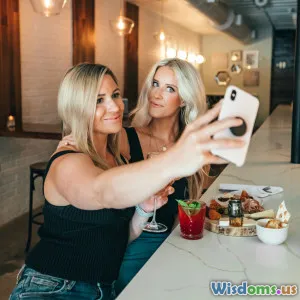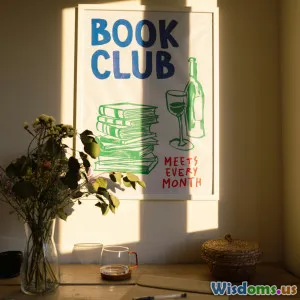
How Cooking Competitions Changed Prime Time Television Forever
8 min read Explore how cooking competitions revolutionized prime time TV with innovative formats, engaging storytelling, and cultural impact. (0 Reviews)
How Cooking Competitions Changed Prime Time Television Forever
Introduction: A Recipe for Revolution
Prime time television before cooking competitions was dominated by sitcoms, procedural dramas, and game shows. However, with the arrival of cooking competitions, the TV landscape transformed dramatically. What was once niche culinary interest evolved into a global phenomenon, captivating millions of viewers nightly. Cooking competitions injected new life into prime time slots by blending artistry, personal storytelling, and high stakes drama—reshaping how networks crafted content and engaged audiences.
This article explores how cooking competitions began, the innovations they brought to television formats, their cultural resonance, and what the future might hold for this captivating genre.
Origins and Early Success: The Seeds of a Culinary Boom
Cooking had long been part of daytime television, primarily instructional shows like Julia Child’s The French Chef in the 1960s. Yet, it was the shift from straightforward cooking tutorials to competitive arenas that sparked a revolution.
One of the earliest influential shows was Iron Chef, a Japanese series launched in 1993 focusing on head-to-head culinary battles with celebrity judges. Its high-energy presentation, combined with its unique premise of time-pressured creativity, garnered cult status. The American adaptation, Iron Chef America, debuted in 2005 to enthusiastic reception.
However, the watershed moment in the U.S. came with Top Chef (Bravo, 2006). By integrating intense challenges with insightful backstories about contestants, and by highlighting their personal ambitions, Top Chef reinvented cooking competitions as a deeply human, aspirational story rather than just a food showcase.
Key Early Moments:
- Iron Chef (Japan, 1993): Introduced theatrical competitive cooking.
- Top Chef (U.S., 2006): Elevated storytelling and real-time competition.
- Hell's Kitchen (Fox, 2005): Provided a dramatic narrative driven by Gordon Ramsay’s fiery persona.
These shows set a new standard: not merely cooking, but layered human drama combined with culinary excellence, an engaging format that hooked diverse audiences.
Production Innovations: More than Just Food
Cooking competitions didn’t just change television programming—they transformed television production itself.
Visual Storytelling With Ingredients
From sizzling pans to vibrant plating, producers discovered a goldmine in visually stunning food. High-definition broadcasts enhanced sensory appeal, with slow-motion sequences capturing flour dust or sauce dribbling, turning cooking into visual poetry. This cinematographic attention borrowed from scripted dramas, making food sensory art that stimulated viewers even at home.
Narrative Architecture: Character and Conflict
Earlier cooking shows lacked character-driven plots. Shows like MasterChef and The Great British Bake Off (GBBO) expertly intertwined competition with real-life contestant stories, rivalries, mentorship arcs, and emotional moments like triumphs and setbacks. This elevated cookery to an emotional journey, akin to reality TV’s best storytelling.
Example: In The Great British Bake Off, audience empathy deepened through unscripted reactions to challenges and heartfelt support from between contestants, fostering a communal viewing experience.
Interactive and Multi-Platform Engagement
Besides broadcast, cooking competitions leveraged social media, apps, and web content to expand their reach and involvement.
- Real-time voting and social media debates enhanced viewer participation.
- Behind-the-scenes web series and recipe content deepened engagement.
Such innovations turned passive viewers into active communities, a dynamic few pre-cooking competition prime time shows managed to achieve.
Cultural Impact: Redefining Culinary Pursuits and TV Audiences
Cooking competitions broadened the cultural mindset toward food, dining, and entertainment.
Elevating Culinary Arts
The intense competitiveness spotlighted talent, innovation, and technique, inspiring audiences to view chefs as elite artists and entrepreneurs. This phenomenon contributed to increased interest in culinary careers among young people, evidenced by rising culinary school enrollments post-2000s.
Diversity and Globalization
Competitions embraced diverse cuisines and contestant backgrounds: from street food to haute cuisine, from suburban home cooks to immigrant chefs—highlighting multicultural influences that mirrored globalized societies.
Shows like MasterChef Australia incorporated indigenous ingredients and immigrant stories, expanding cultural appreciation through prime time.
Changing TV Demographics
Once fragmented among traditional categories, prime time audiences united around these programs, drawing food lovers who were not typical prime time viewers. Men, women, young adults, and older generations all found common ground, increasing viewership diversity significantly.
Examples of Lasting Influence
Spin-Offs and Franchises
From Chopped’s rapid-fire challenges to Bake Off spin-offs globally, cooking competitions have become a template for reality TV format success.
Cross-Media Influence
Food-based competition elements now permeate digital platforms, video games (e.g., Overcooked), and social media challenges, showing how television innovations influence culture beyond the screen.
Celebrity Chefs as Icons
Carla Hall, Christina Tosi, Gordon Ramsay, and Padma Lakshmi gained international fame largely from these shows. Their influence transcends television into publishing, restaurant businesses, and philanthropy.
These personalities helped create a modern food culture that is aspirational yet accessible—a core dynamic driving the popularity of cooking competitions.
Conclusion: The Ever-Evolving Table
Cooking competitions permanently altered prime time television’s essence by marrying culinary innovation with human drama, compelling storytelling, and cultural inclusivity. They transformed cooking from an instructional activity into a competitive sport and entertainment art form visible on the world’s biggest stages.
As COVID-19 reshaped global viewing habits and production methods—with innovations like virtual auditions and global broadcasts—the future seems ripe for further reinvention. Expect advancements like augmented reality plating and interactive crowdsourced challenges to continue evolving the format.
The legacy is clear: cooking competitions have become a television ‘masterpiece.’ They’ve rewritten the rules not just for food shows but for all prime time programming, proving that great stories can come from even the simplest places—a kitchen and a burning passion.
References
- Rick P., Taste Makers: How Cooking Shows Changed America’s Relationship With Food, Food Studies Quarterly, 2018.
- Nielsen Ratings, Prime Time Popularity Report, 2022.
- The Great British Bake Off official website, BBC.
- Jenkins, H., Convergence Culture, NYU Press, 2006.
- Bravo TV, Top Chef media kits and audience insights.
This article dives into the vibrant world of cooking competitions and their transformative impact on prime time television.
Rate the Post
User Reviews
Popular Posts
















